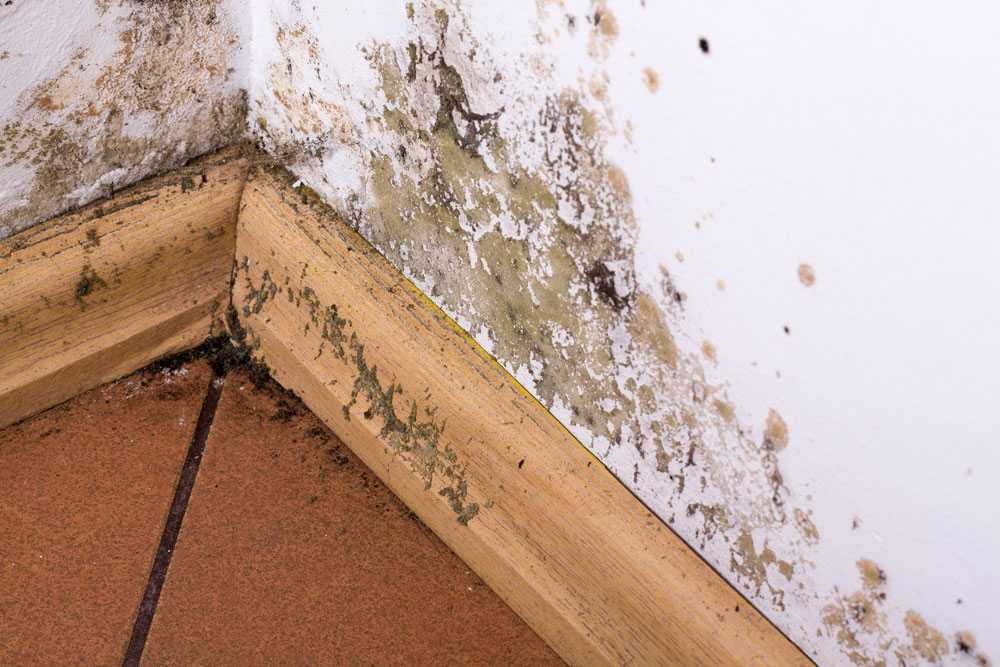What Kills Mould Spores In Your Home?
 CONTENTS
CONTENTS
- What are mould spores?
- The dangers of mould spores
- How do you kill mould spores?
- Can air purifiers remove mould spores?
- How to prevent mould in your home
- Book your mould remediation
Mould is an unsightly, harmful fungus that can cause serious health problems and damage your property. Unfortunately, it can spread very quickly across your home via invisible spores. If not dealt with when a small problem, it can soon become a major issue.
Here at ICE Cleaning, we offer thorough, long lasting mould cleaning services. Our mould experts are available nationwide, 24/7, 365 days a year to eliminate the mould in your home. Our nine-stage mould treatment process can even remove mould from the air.
Keep reading to learn more about how to kill mould spores and how to stop them spreading around your home.
What are mould spores?
Mould spores are tiny, lightweight particles released by mould that float through the air and settle on surfaces. They are like seeds: when they settle on surfaces that provide mould with its ideal conditions for growth, they germinate and grow.
Spores are invisible, and can quickly spread and start to grow without you knowing. Mould growth only becomes visible after 18 to 21 days of growth. You can learn more about the lifecycle of mould and how long it takes to grow in this blog.
The dangers of mould spores
Inhaling, touching, and ingesting mould spores can put you at risk of a range of health problems. You may suffer from the following symptoms:
- A runny nose
- Sneezing
- Red eyes
- A skin rash
People with pre-existing health conditions and a weakened immune system may suffer more serious reactions as a result of exposure to mould. This includes respiratory infections, asthma attacks, and sick building syndrome.
How do you kill mould spores?
You should not try to remove mould yourself. Although it is tempting to apply a cleaning product like bleach or alcohol to the affected area, these DIY solutions usually just remove the surface mould temporarily. They also often fail to penetrate deeply enough to destroy all those stubborn spores lurking beneath.
Using harsh chemicals can put your health at risk, too, such as producing harmful fumes or irritating your skin. They can even damage the surfaces they are used on.
Cleaning mould can aggravate it, as well, encouraging it to release mould spores which you are likely to inhale or touch without the right personal protective equipment (PPE). These spores will then spread around the property and cause mould elsewhere.
Professionals, on the other hand, will have advanced mould removal equipment and techniques like HEPA vacuums and antimicrobial treatments for effective mould removal.
They will take health and safety seriously, as well. Cleaners will wear full PPE throughout the mould remediation and isolate the affected area to stop the spread of mould spores.
They can even diagnose the cause of the mould in your home and advise on how to prevent it returning in the future. Mould cleaners will give you peace of mind that your mould problem is dealt with once and for all.
Can air purifiers remove mould spores?
Air purifiers equipped with HEPA filters can capture mould spores and help remove them from the air.
That being said, they will not tackle the root of the problem. The air purifier will do nothing to the mould colonies thriving on your walls or in damp corners. You can learn more about how to remove mould spores from the air in this blog.
How to prevent mould in your home
Despite how challenging it can be to get rid of mould, keeping mould at bay is relatively easy. Mould thrives where it's damp, dark, and poorly ventilated, so making sure your home is dry and well-lit is key.
First, make sure your property is well-ventilated. Open windows every day to let in fresh air and push out stale, humid air.
If natural air flow is not enough to lower the high humidity levels, consider investing in dehumidifiers and air conditioners.
You should also have leaks fixed by professionals as they can provide mould with the excess moisture it needs to start growing.
Ensure there is a sufficient gap between the furniture and the wall, as well. Too small a gap can result in pockets of humid air forming.
Don't forget to avoid drying clothes indoors, too. Or, make sure it's done in a well-ventilated area so the water vapour released into the air does not get trapped in your home and settle on surfaces.
Lastly, keep the heating on. Consistent heating stops surfaces getting cold, reducing the likelihood of condensation.
Book your mould remediation
To find out more about our mould removal services, contact our friendly team today on 0208 066 0360 or send an email to enquiries@icecleaning.co.uk. If it's an emergency, our mould specialists can be on site within several hours.

Speak with me today,
I’m here to help
By asking you a few questions either via phone or email I can immediately provide a realistic estimation of the cost.
You’re in good company. We’ve cleaned for the following commercial clients… View all

Why choose us?
- Cater to a wide variety of cleaning situations
- Nationwide coverage, available 24/7
- Cater to commercial and domestic clients
- Free survey provided prior to quotation
- Emergency response team
- Offer a bespoke service designed to suit all your needs
- All technicians hold professional health and safety qualifications, including BICSc, IOSH, Dewpoint Professional & Safe Contractor
We’re fully accredited
We place best practise, professional expertise and health and safety at the core of our business. We’re fully compliant with all legal obligations. You can view a list of our accreditations below, or visit our Health & Safety page for more information.











-RGB-small.1707319151.jpg)




















